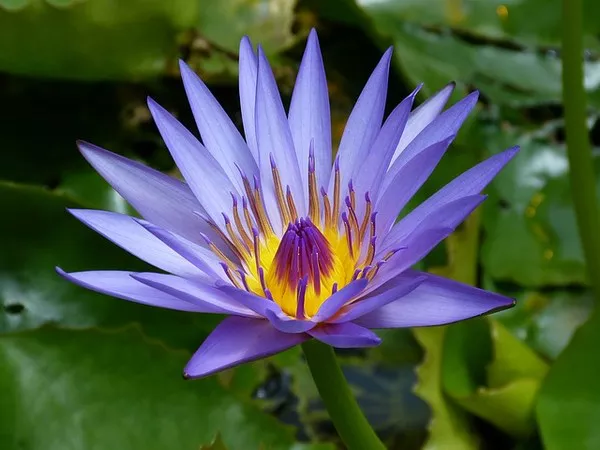The allure of flowers and the beauty they bring to our living spaces is undeniable. However, for those who share their homes with feline companions, it’s crucial to recognize that not all blooms are safe for cats. As curious creatures, cats often investigate their surroundings, and their inquisitive nature can lead them to explore and interact with plants, some of which can be toxic or even fatal to them. This article delves into the world of flowers poisonous to cats, shedding light on the potential risks and how to safeguard our feline friends from harm.
The Curious Cat and Floral Fascination
Cats are known for their inquisitiveness and their tendency to explore their environments. This natural curiosity extends to the flora that surrounds them, and as responsible pet owners, it’s our duty to ensure that the plants within our homes and gardens do not pose a threat to our feline companions. While many flowers are harmless, a significant number of plant species can be toxic to cats, causing a range of adverse reactions that can vary from mild discomfort to life-threatening consequences.
See Also:A Guide to Cat-Safe Flowers: Ensuring a Beautiful and Feline-Friendly Environment
Common Toxic Flowers
A variety of common flowers that grace our gardens and homes can be dangerous if ingested by cats. Some well-known examples include:
1. Lilies
Lilies are exquisite flowers adored for their elegance and fragrance. However, they are extremely toxic to cats, particularly members of the Lilium and Hemerocallis genera. Ingesting even small amounts of lily pollen, leaves, or petals can lead to severe kidney damage and, in some cases, prove fatal.
2. Azaleas and Rhododendrons
These vibrant flowering shrubs are prevalent in many gardens. However, they contain grayanotoxins that can cause vomiting, diarrhea, drooling, and even potentially deadly heart issues if consumed by cats.
3. Tulips and Daffodils
Tulips and daffodils are synonymous with springtime beauty. However, their bulbs contain alkaloids that can cause gastrointestinal upset, drooling, and even more severe symptoms if ingested by cats.
4. Chrysanthemums
Chrysanthemums, with their vibrant colors, are popular in floral arrangements. They contain pyrethrins, which can lead to gastrointestinal issues, lethargy, and, in severe cases, tremors and convulsions in cats.
5. Sago Palm
The Sago Palm is a common ornamental plant, but all parts of it are highly toxic to cats. Ingestion can cause liver failure, seizures, and potentially death.
6. Oleander
Oleander is an outdoor plant known for its attractive flowers, but it’s one of the most toxic plants for cats. Ingesting any part of the plant can lead to severe heart problems, gastrointestinal issues, and even death.
Recognizing Symptoms of Flower Poisoning in Cats
Awareness is paramount when it comes to recognizing the signs of flower poisoning in cats. The symptoms can vary based on the type of flower ingested and the quantity consumed. Common signs of flower poisoning in cats include:
Vomiting
Diarrhea
Drooling
Loss of appetite
Lethargy
Difficulty breathing
Rapid heart rate
Tremors or seizures
If you suspect your cat has ingested a poisonous flower, it’s essential to seek immediate veterinary attention. Early intervention can significantly increase the chances of a positive outcome.
Preventive Measures for Cat Owners
Preventing flower poisoning in cats involves a combination of awareness, diligence, and making informed choices regarding the plants in and around your home. Here are some steps you can take to keep your feline friend safe:
1. Research and Choose Cat-Friendly Plants
When selecting plants for your home and garden, prioritize those that are non-toxic to cats. Numerous resources are available online and from reputable garden centers that can help you identify safe options.
2. Educate Yourself and Others
Ensure that everyone in your household is aware of the potential dangers associated with specific flowers and plants. Educate family members, roommates, and guests about which plants should be kept out of reach of your cat.
3. Create Safe Spaces
Designate areas within your home that are inaccessible to your cat. Consider using plant stands, hanging planters, or shelving to display flowers in places your cat cannot access.
4. Monitor Outdoor Explorations
If your cat spends time outdoors, be vigilant about the plants present in your yard or surrounding environment. Remove any toxic plants and replace them with safe alternatives.
5. Supervise Floral Arrangements
When displaying fresh flowers, ensure that they are placed in locations your cat cannot reach. Cats are known for their agility, so be cautious about leaving flowers on countertops or tables within their jumping range.
6. Recognize Behavioral Changes
Pay attention to any sudden changes in your cat’s behavior, eating habits, or physical condition. Prompt action can make a significant difference in their recovery if poisoning is suspected.
In Conclusion
As responsible cat owners, it’s our duty to ensure the safety and well-being of our beloved feline companions. Understanding the potential risks associated with certain flowers and plants is a crucial step toward creating a secure environment for them. By choosing cat-friendly flora, educating ourselves and others, and remaining vigilant, we can prevent flower poisoning and provide our cats with a thriving, toxin-free home. With the right knowledge and proactive measures, we can continue to enjoy the beauty of flowers while safeguarding our furry friends.


